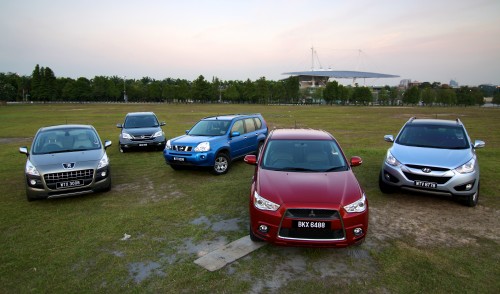
Granted, the sport utility vehicle segment has a different luster than that of more than a decade ago, when the class was fresh and burgeoning, and manufacturers were falling over each other to fill the slots in the new opening. Then, robustness was generally the operative word, so an SUV had to be tough to tackle terrain and yet be compliant enough for urban use. Not the easiest thing to manage, you can imagine.
Time – as well as trial and error – has seen the category become more refined, and the sparkle these days is probably better at wooing buyers. A more focused scope has come about, with the need to be able to traverse the great outdoors in rugged fashion pretty much left behind, like it should have been in the first place. Today’s SUV is very much a suburban-centric offering, aimed at the urban crowd for which a sedan doesn’t have enough space and presence, and a MPV too much, and boringly so.

Now, most of us know how capable these vehicles are, taken on their own, but how do they fare when pitted against each other? With that in mind, we decided to take a closer look at how they match up, pitting five examples – the Mitsubishi ASX, Nissan X-Trail, Honda CR-V, Hyundai Tucson and Peugeot 3008 – in a quintet face-off to see how it all shapes up.
There are other contenders, namely the new Kia Sportage, the Suzuki Grand Vitara, the long-in-the-tooth Ford Escape as well as the likes of the Chevrolet Captiva, for example, but adding more than what we ended up with would have made the task unmanageable. It’s all nice to read a nine or 10 SUV shootout, but doing one is another thing altogether.
That said, on with the show to see which one ends up as the king of this particular hill.
EXTERIOR
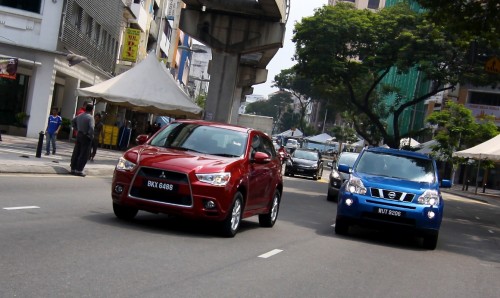
Danny says
The five SUVs assembled here range from a big box to one not much bigger than the hatchback it’s based on, from building blocks to fluidic sculptures, so there’s bound to be one to suit one’s taste. Agree?
I’m not much of an SUV kind of guy (the Audi Q5 is another matter), and there is no overwhelming favourite for me either, but I like the blend of sharp lines and compact proportions of the Mitsubishi ASX. This deep shade of red probably isn’t the most flattering, and it could do with a sportier set of wheels, but I like it best.
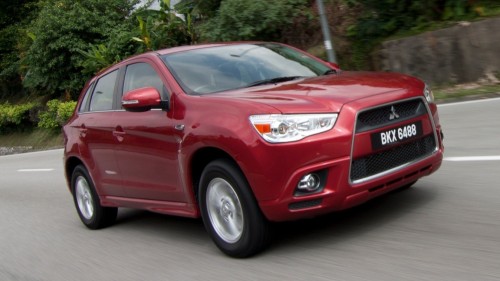
The most flamboyant of the group by a mile is the Hyundai Tucson. It’s very eye-catching, and like Anthony, I like that muscular rear three-quarters view the best. Not so in love with the fussy face, but this is a great example of a self-confident, expressive design, as opposed to the “play safe, don’t offend” looks of previous gen Koreans. It’s a gamble, but it’s paying off big time for Hyundai.
Never liked the popping eyes + double grille look of the CR-V, which for reasons unknown, brings a startled hippo to mind. The Honda is no longer repulsive thanks to familiarity, but it’s not pretty either, which brings us to the Peugeot. The 3008 is just too odd for me – the proportions, overhangs, and that face – I just don’t get it. Would love to interview the designer someday, just to know what inspired him. I quite like how its MPV sibling 5008 looks, though
One can’t fault the X-Trail for being a box, because that’s wholly intentional on Nissan’s part. The carmaker says that first-gen X-Trail owners (and there are many of them) love their SUV’s macho square cut lines, so they made more of the same. And with more rivals going the crossover route, the “keep it true” X-Trail may find itself serving a large number of taste buds.
As they say, one man’s meat…
Harvinder says

Lets face it. Looks are somewhat important when you talk about cars and it’s correct to assume so in this case. Good looking cars somehow attract us, but at end the of the day, if a car is good looking to one it doesn’t necessarily mean it is good looking to another. All subjective, to say the least.
In the case of these five SUVs I must admit that two cars stand out from the pack. One is the Peugeot 3008, while the other is the Hyundai Tucson. I think you can safely guess why the 3008 is in my standout list. Well, yes, you’re right, it stands out because it does look a little quirky, perhaps a little too modern for today’s tastes.
Don’t get me wrong, the 3008 does have some good angles, but definitely not as many compared to the rest of the line-up we have here. The taillights remind me of strawberries for some reason, while the front makes me think of JAWS. Weird, I know, but that’s what crossed my mind. Then we have the Hyundai Tucson at the end of spectrum, something that has gone through a lot to come this far.

At first glance, the Tucson strikes you as a good looking thing. Very sweet and pleasant from almost any angle. Hyundai’s designers have been working around the clock to come up with the designs they have now, which I must say, are rather appealing. In this case, just like other Hyundais at the moment, the form is treated with the fluidic design concept and it’s working well here.
However, I do feel that the car is a little too ‘fluidic’ for me, if you know what I mean. There’s a tad too much on the design lines, which I consider the only off-putting thing the Tucson has in terms of design. Nevertheless, that’s just me as the design seems to the be cup of tea to many out there, and I can understand why.
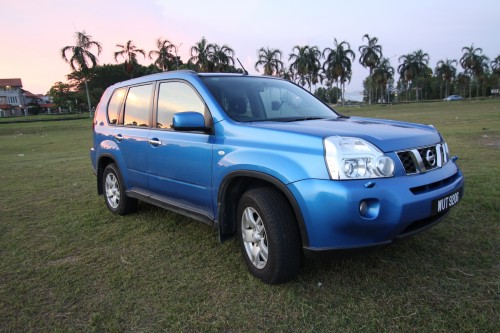
As for Nissan X-Trail, I find this one a bit too utilitarian, a little too boxy. It looks as though it has a lot of design elements that doesn’t seem to fit well together. At times, I feel that some design elements on the X-Trail are afterthoughts. The Honda CR-V seems like a decent looking offering, with the right proportions and not overcooked. However, I think the Tucson comes up ahead of the X-Trail and the CR-V in the design department.
Among all the SUVs we have here, I consider the Mitsubishi ASX as the SUV with the right balance in the looks category. I like the fact that it has Mitsubishi’s trademark jet fighter grille. The aggressiveness is a nice touch and it doesn’t breach the “too much” point in the scale. The ASX looks very good from almost every angle, and is the only SUV here that really looks like a car.
Overall, the Hyundai Tucson and the Mitsubishi ASX are my choices in terms of design. Comparing both, I find that the Tucson is a bit too flashy for me, probably like a model who has a little too much make up, while the ASX feels about right.
Anthony says
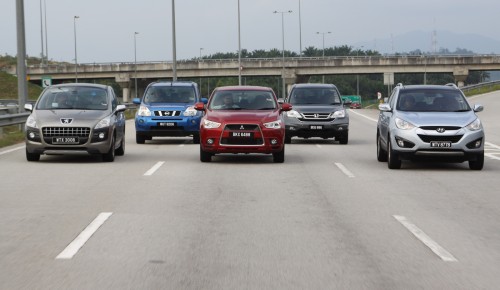
The assembled bunch looked every bit the motley crew, what with the box-like X-Trail mixing it up with the flowing Tucson, and the ASX and 3008 looking more crossover than SUV. An interesting mix of shapes, to say the least.
From an aesthetics point of view, the X-Trail isn’t going to win any contests for being the curviest creature, or indeed the sexiest thing on four donuts. With a shape that feels like slabs chunked together, this is very much a box on wheels. The utilitarian shape, however, hints at the volumetric scope within, and you just know this one – which is larger than the first-generation model – is going to offer loads of it. Function over form, indeed.
The Tucson takes its place at the other end of the swing, and showboats all those curves and swoops like it’s going out of fashion. Certainly, there’s nothing reserved about how it parades its wares, though I have reservations as to how the lines will hold up as time progresses. I love the rear though, viewed straight on from behind; of the five, it’s the derriere with the most flair and appeal.
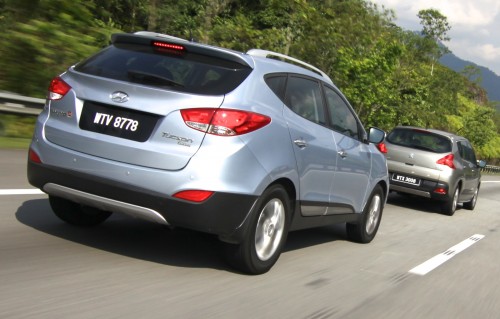
As for the CR-V, the third-generation model is heading towards its end of duty tour, but retains a balanced appeal about it. Not the most exciting, the RE, but plying the safe route means the exterior has held up well enough over the four years plus of its life cycle so far. For sure, the buying public has found – and continues to find – its quiet elegance to be more than agreeable, and this includes my other half; the CR-V here happens to be her vehicle.
Meanwhile, the Peugeot rolls into the fray here looking a bit of an oddity, like it doesn’t quite belong. It’s the smallest looking vehicle of the bunch, and the shape drew mixed opinions from the team. I quite like the front from certain angles, but for sure it’s not the type of vehicle you’d gawk at the whole day. The European influence in its lines is unmistakable though, and it does look very solidly hewn compared to the Asian opposition.

Finally, the ASX. It’s the one with the leanest, most athletic stance, essentially looking very much the prowler. The wedge front works for me and the overall lines offer good proportionate scale, despite its lack of overall mass.
Indeed, it’s my pick of the five from the exterior point of view, the ASX. I’ve always preferred my cars lean and on the smaller side, and while the 3008 may also be so, its disposition is a bit too soft and too rounded for my taste. I’ve gotten so used to the CR-V it’s become a familiar shoe, so it doesn’t have quite the charm it once had. You can probably tell the X-Trail doesn’t work at all for me, and it never did even with the first incarnation. The Tucson’s flash is striking though, so it’s a close second in my books.
INTERIOR
Danny says
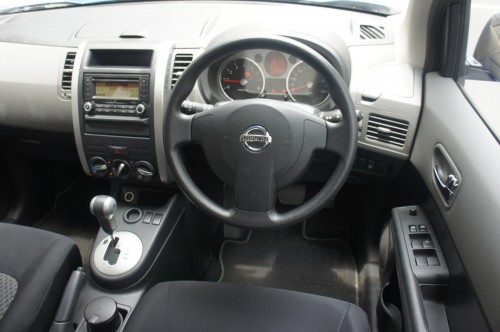
Throughout our test period, I spent the most time in the Nissan and Peugeot, collecting the former and returning the latter to their owners. I love the X-Trail’s cabin for its excellent view out (lots of glass, square corners) and comfort. The fabric seats are big and cushy, typically Nissan, and there’s nothing to learn or get used to – you just step in and drive.
However, the spartan look and feel may be a disadvantage in the showroom, making Nissan look stingy. But that’s not entirely true either.
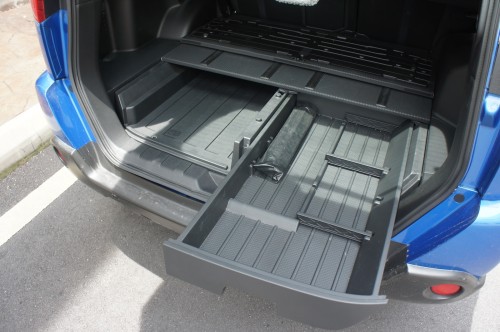
While the X-Trail lacks some basic kit such as climate control, leather and buttons for the steering, as well as flashy toys such as the Hyundai’s push start button/panoramic roof, Mitsu’s 2-DIN head unit or Honda’s cool instrument panel, it’s the only car here to come with electric adjustment for the driver’s seat as well bi-xenons, kit that even the “fully-loaded” Euro-spec Peugeot doesn’t have. And if given a choice, I’d have those over auto air con and auto cruise.
It’s a car that that the family will love as well. Tall seating position, high roof, large windows and the useful boot trays with compartments are good for road trips or ronda-ronda sessions.
The Peugeot is a good family car as well, if you have a small family with young kids, that is. The expansive panoramic glass roof is spectacular, but rear legroom is very tight. Passable if someone my height is seated in front, but if they are tall, rear knee-room can go down to almost nothing. The 3008 must be tried for size, because it’s not for all.

It’s for those who want some sports car feel from their SUV. The Pug’s driving quarters is very cozy and enclosed, with a sloping centre stack and a tall centre console that divides the front section into two distinct areas.
It’s very cockpit like, and the driver is boss, which matches the driving character of the 3008. He/she is faced with plenty of toggle switches and twin pod dials. There’s also the much boasted head-up display (HUD), although I personally find this to be rather gimmicky.
Unlike BMW’s version, the image here is shot on a separate screen that can be erected by a toggle switch, and although the image (only digital km/h) can be adjusted for height, I still had to lower eye focus to view it, defeating the very purpose of HUD. The operation of the screen in our test car was also very noisy.
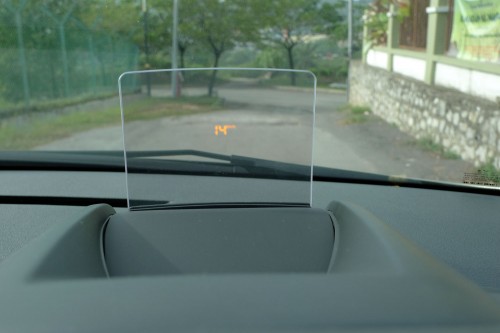
That aside, I wasn’t very comfortable with the angle of the left foot rest, and my idle foot became quite restless as a result. This is an unusual observation, since I’m usually immune to many ergonomic challenges pointed out by Paul and Harve.
Step into the Honda CR-V and it becomes clear why this is THE SUV to have for many upper middle-class households. It doesn’t have as many toys as some other cars in this test, or even as much soft touch plastics, but feels the most premium from behind the wheel. This isn’t easy to explain, but the lighting, that nice MID between the dials, the brushed trim, the tactile quality of the knobs and buttons, and the full house centre stack gives off a full-function, technical and expensive feel.
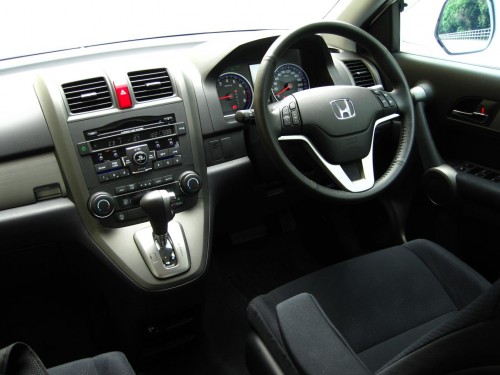
I also like the abundance of storage spaces and cubbies in the Honda, derived from locating the gear lever on the centre stack. Rear passengers are also in for a treat – legroom is superb in this company, although it could feel even more spacious with a lighter coloured cabin, as opposed to black.
The Mitsubishi ASX, which also has a dark room cabin, is much less spacious than the CR-V inside, something the spec sheets won’t tell you – the ASX’s 2,670 mm wheelbase is actually 50 mm longer than the Honda’s.
The good stuff surrounds the driver – nice sporty steering wheel, long magnesium shift paddles, clear (almost VW/Audi like) dials – but MMC has improved perceived quality over that in the Lancer.
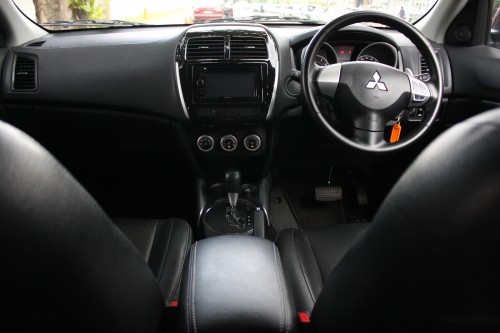
The dash areas closest to occupants are now padded with soft touch plastics, as are the door caps. The multi-info display is colourful and high res, a big improvement over the jagged figures in the Lancer. Also, the instantaneous FC bar also has a “bookmark” for the average done so far, so there’s extra motivation to be light-footed, if that’s your direction.
The head unit is the usual locally-fitted (by MMM) Kenwood system, which isn’t the most user friendly, but it’s feature-packed (reverse camera, DVD player, large full colour touch-screen, etc) and looks impressive, so no complaints.

Last but not least, the Hyundai Tucson. Just like the bold shell, Hyundai has gone for showcar dashboard design that matches the exterior bravado. Lots of sweeping curves and elements means your eyes are in for a workout. There’s this theme of two opposing kinks in the overall dash mould, the centre stack as well as the steering wheel. As with modern Hyundais, the theme is blue. I can understand the modern, techy appeal of the Tucson’s dash, but personally I prefer something more subtle and refined.
Plenty of adjustment available in the Tucson, so driving positions for various sizes shouldn’t be a problem. Outward visibility is not great in this group, a high waistline and shallow windows see to that. Off the shoulder rear view is also poor, but with such a design, you can’t win it all. The showroom appeal and many toys (keyless entry, push button start, integrated stereo with USB, iPod and AUX input) might delay the dreaded knuckle rap, which reveals hard plastics. They don’t feel super nasty or cheap though, and is not an issue to many.
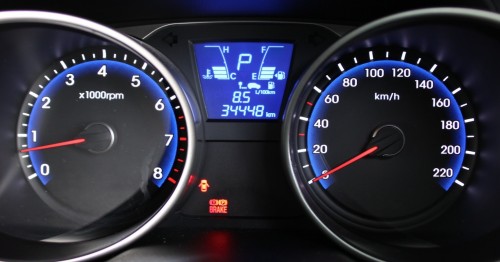
It’s also good that our 2.0 High Spec test car comes with a panoramic glass roof (split into two, like the W211 Merc E-Class, Sonata YF), since the cabin feels rather enveloping and dark in this company.
In terms of design, in and out, the Tucson is everything the X-Trail isn’t, vice versa. One is unapologetically utilitarian and functional, the other designed to wow and impress. I want some from both ends, and like the CR-V’s blend of good comfort and space, plus premium feel dashboard.
Harvinder says

The cabin is one of the most important things one should consider when buying a car, and unfortunately many potential buyers or owners out there spend less time thinking about a car’s interior before making the decision. It is a place where the driver and his passengers will spend most of the time throughout the ownership experience.
Before I continue with my bit on the interior, I must point out that out of all the SUVs we have here, three are Japanese, one is Korean while another is French. Now, I don’t think I need to emphasize that when it comes interior, the European guys have been doing it well and the Asian rivals, although some are pretty good, are still playing catch up in this department.
To me, I feel that is is true in this case at least. The Peugeot 3008 to me, has the best interior when it comes to tactility and comfort for the driver. As soon as you get into the driver’s seat, you’ll instantly tell yourself that “this is not a driver’s seat, this is a cockpit”. The driver’s section is truly like a jet-fighter’s cockpit with the centre dash somewhat focused towards the driver.

Even the switches and knobs make you imagine you are in a car with wings. The tactility of the interior is pretty good as well, with soft-touch materials in the right places. Personally, I take seat comfort seriously and it is important to have something that is able to support your back properly. It pays when you have those long distance drives and to me, the seat also plays a role to making you feel that you are in a premium vehicle.
The French have got it right with the 3008. The front seats are very comfortable and they offer the best support among all SUVs we have here. I particularly like the headrest design, which reminds me of the ones used in the W211 Mercedes-Benz E-Class. You can tilt it forward to better support your lower neck.
Other features like the glass roof, the rear two-piece tail gate, dual zone air-conditioning and electric parking brake is a nice touch too, but I do agree with Danny on the part HUD portion which is a bit tricky to use. The major downside of the 3008’s interior is that the rear legroom is a little on the tighter side of things. It’s not a very comfortable place for large-sized occupants. Also, it would be great to have a fully-electric front seat, at least for the driver.
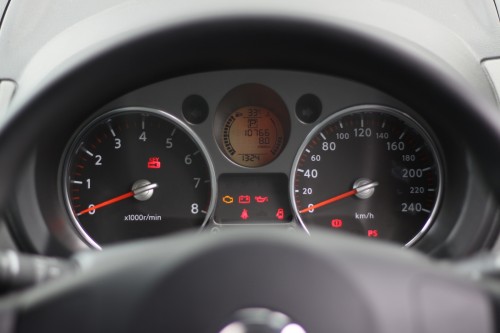
The Nissan X-Trail is not a bad place to be in either. It does look a bit utilitarian on the inside, with a rather simple feel to things, but it is quite comfortable and the space, including the rear cabin, is pretty good too.
If you’re okay with the simplistic approach, the X-Trail’s interior can be a nice place for you to be in. There are plenty of compartments, including a double luggage floor system, as well as a 6-way adjustable power seat for the driver, which interestingly is not offered with rest of the SUVs we have here.
The Honda CR-V also has a decent interior and for some reason, it does feel a little premium despite not having many soft-touch surfaces. Honda seems to be good in doing this, even with less expensive cars like the entry level City.
To me, the most striking thing about the CR-V’s interior is its rear legroom, which is very good. You’d be a very happy rear passenger; it’s reminiscent of the Civic, which also offers good legroom space. Just like the X-Trail, storage compartments are very much adequate in the Honda. There are also features like dual zone air-conditioning and cruise control, similar to the 3008.

Just like the exterior, the interior of the Hyundai Tucson also has carries over the flowing design. It looks pretty good if you ask me, but there is a let down though. The interior does not feel premium and it is even outperformed by the X-Trail, if you ask me. There are hard plastics everywhere and even for a car that has done over 30,000 kilometers, the interior felt worn a little, which isn’t a good thing.
Don’t get me wrong, the design is nice, but you have to wonder if it’ll last the distance. Things like the start-stop button are nice to have, but it does little to overshadow the flaws. The ASX has a decent interior which doesn’t look cluttered and at the same time, it doesn’t look cheap as well.
The seating position for the driver is just about right, making it a better option for those who like a sporty feel behind the wheel. I find that the full colour high-resolution LCD multi-information display nestled in between the instrument gauges quite a cool feature to have, thanks to a fuel consumption monitor that incorporates both instantaneous as well as average readings. The rear cabin could have used a little more legroom though.
Overall, I find that the Peugeot 3008 has the best interior; I can make do with the smaller rear cabin, although I really feel that an electric driver’s seat should have been included.
Anthony says
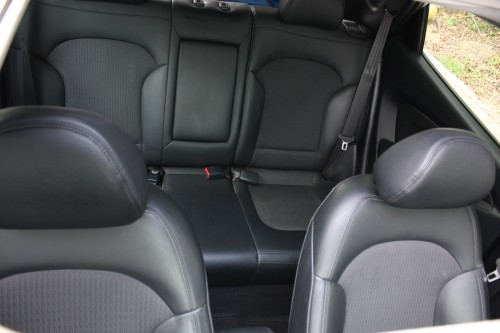
From an interior perspective, the differences in character continue to show. With practically most of the time being spent in the driver’s seat during the comparo, there was little time to delve in detail the sub-practicalities of things such as boot space and rear seat comfort levels, save for the CR-V, which I’m, erm, rather intimate with.
First up, the Tucson, which lends its allure through more sweeping contours on the inside, as well as with a host of tech bling – there’s stop-start button ignition and an auto dimming rear view central mirror, for starters. These mask the lack of items such as cruise control and going the manual air-conditioning route.
If there’s a gripe with the Tucson’s interior, it’s with the presentation – no complaints about how the layout is presented, but the design elan notwithstanding, the hard-looking plastics cheapen the visual appeal considerably. There are also questions about material durability. The interior of the evaluator, with more than 30k on the clock, looked a bit worse for wear. For example, the engine stop-start button’s wording was already looking quite worn, hence the questions.
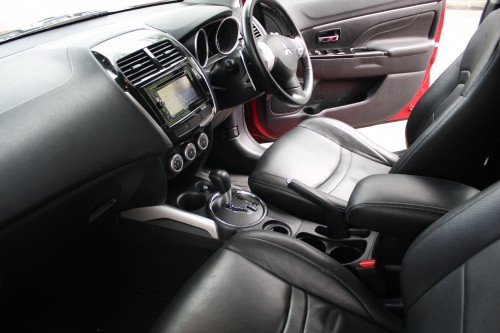
Still, there’s much more fanfare in it than on the likes of the X-Trail and ASX, which both feature rather austere cabins. The ASX, with its blackened interior, feels the more spartan of the two, and is reminiscent of the Lancer sedan’s bare approach. It’s more premium in feel though than the Lancer material-wise, so points for this.
The ASX also doesn’t feel as small as you think it would be. The cabin is intimate, but not claustrophobic, even if larger-sized drivers in the Mitsubishi look like they’re driving a Hyundai Getz (not my words). The driving enthusiast will find much to like in this one, with everything presented in line with the vehicle’s sporty pretensions, as will those who like their porridge plain.

Meanwhile, the X-Trail offers very much the same path, presenting a cabin that looks plain bare upon first glance. The plastics are typically Nissan, serviceable but not the final word in premium. This plainness is offset by plenty of practical features – cubby holes and storage space are to be found galore, and items such as rear air-con vents, for example, add to the list. And that volume suggested from the outside is translated when you’re in the vehicle. It feels downright spacious, the X-Trail does.
A note too about its seat comfort, which is the softest in terms of comfort of all the five vehicles; it is a little bit too soft for my liking, especially over long distances, but many will no doubt value its plushness. The Peugeot’s front seat, however, is the standout for me.

The Peugeot’s cabin also features the best material and trim, clean and unfettered, but all hewn together in solid fashion and very elegant in its presentation. Cabin space, however, feels pinched, and if you have tall occupants in front, it’s bad news for those in the rear, where legroom is concerned.
And the 3008 still feels lacking in open and accessible storage space, as previously noted when I drove it during its original media test drive a good while back – attempts to house wallet, phone, keys and cigarettes without having to call in the large storage box were as challenging as before. I still think there’s a photon torpedo launcher housed underneath that huge-assed centre console tunnel, but the firing button is proving rather elusive to find.
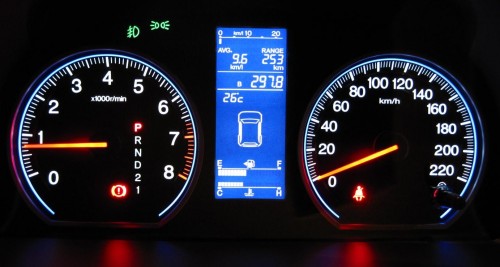
So, of the lot, my pick is with the CR-V’s interior. It’s easy to forget how well Honda gets it right where it matters – aside from the excellent rear legroom, the cabin presentation has a premium feel to it, even if there’s not much bling and fanfare in terms of tech and features.
The plastics may be hard, but they don’t look cheap, and the centre console layout, along with the instrument cluster – especially lit up at night – is fetching. It’s not quite Pug territory, but it’s well ahead of the rest of the group. Storage in the CR-V’s front is more than adequate, though there are quirks elsewhere, like where the 12V socket is placed, which is set too low and difficult to access, especially in the dark.
Still, throw in items such as cruise control and auto climate control as well as the small, almost imperceptible tactile bits (the feel of the switchgear operation is a perfect example) and you can see exactly how the Honda scores where it counts.
PERFORMANCE
Danny says

Although it’s no sports car, the Peugeot is the sports car of the group. It’s the only Continental on call here, and preaches Europe’s downsizing philosophy – direct injection, smaller capacity, forced induction. The 156 hp it makes is no big deal in our 2.0L SUV party, but it’s the turbo engine’s 240 Nm from a mere 1,400 rpm that makes all the difference here.
This gives the 3008 useful punch away from standstill, and good flexibility. Although the pace is subdued a little from the 308 Turbo, which it shares its drivetrain with, possibly due to the extra weight, it should be more than enough go for those shopping in this segment. The official 0-100 km/h time is 9.5 seconds – it practice, the 3008 feels faster than that. As usual, it’s smooth revving and quite linear in delivery.
We must also mention the six-speed automatic gearbox, which is a quantum leap over the “Porsche Tiptronic” four-speeder of old. It’s still not the fastest or snappiest torque converter auto around, but it no longer has a mind of its own, and is competent enough to not annoy.
The “sports car of the group” rep isn’t just from the pace, though. The 3008 feels quite agile and pointy in the bends, and the way the car resists body roll is impressive. This flat stance encourages one to push harder, since there’s no clumsy weight transfer to put you off. No, it doesn’t claw into corners like a hot hatch, but one can at least make the most of what he has in the Peugeot with ease. Sacrifices? Ride comfort is not the best, others soak up bumps better.

If there’s an element from the other SUVs I would want in the Peugeot’s drive, it’s the ASX’s steering. Direct and blessed with good feel, the Mitsu’s helm is as “sporty” as the wheel itself looks. The ASX is also good to drive, but one downside is the lack of cruising refinement. There’s a good deal of road/tyre roar seeping into the cabin. I wonder if a tyre swap would help…
The ASX carries over the Lancer’s 4B11 engine and CVT gearbox. I’m not a fan of CVT, but the transmission works well, and there’s always the manual mode when the mood arises, although it still doesn’t feel 100% natural in those six virtual ratios.
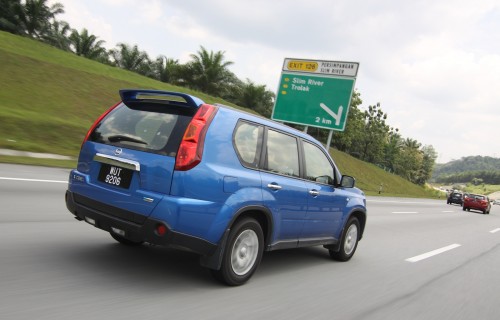
For non-fans, the company in the best position to persuade is Nissan. Their Xtronic CVT works like a charm in the Sylphy and the X-Trail we have here. It’s the CVT, as advertised. Mostly smooth and cohesive like the best torque converter autos (except pedal to metal from rest, perhaps), I never once used the manual mode because I couldn’t have done it better. There’s real connection between the speedo and tacho needle, and the drivetrain feels almost resistance-free as you pull away.
Stats that read 139 PS and 198 Nm look below par on paper, but the X-Trail’s smooth flowing style meant that I didn’t crave for more go. The only time it felt lacking was when we were searching for top speed way above the speed limit – a lot of effort was needed to get past the 130-140 km/h zone.
That easygoing drivetrain is part of a similarly likeable package. The X-Trail’s ride comfort is best of the lot for me, soaking up bumps like they were never there and staying rock steady on the highway. We get our supply from Indonesia, so perhaps it’s the local tuning to suit the harsh roads there at work? Whatever it is, our roads aren’t great either, so it’s all good.
All these fit well with a tall ride height with cushy seats and good all round visibility, making the X-Trail a great urban machine and a soothing long distance one.

The Honda CR-V would have also been a good highway cruiser, if not for its hyper sensitive steering. It’s good for the most part, but I found myself feeding constant small inputs to keep it on course during highway drives. It’s not a major or safety issue, but it meant that I wasn’t fully relaxed, and my hands got tired after awhile.
Other than that, the popular segment leader is typically Honda. The engine revs happily with a familiar mechanical buzz, and is quite nice to work on, although more grunt would have been very welcome here. The five-speed auto is as precise and quick as ever. The CR-V’s well judged ride is firm, but never crashy or noisy.
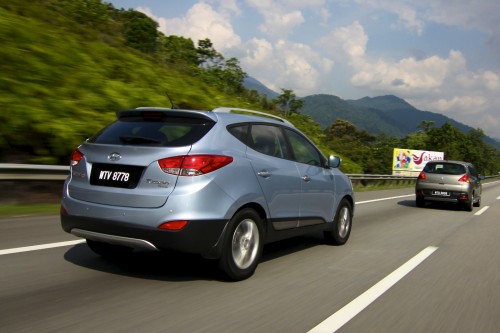
Which leaves the Tucson. I truly admire Hyundai’s brave new direction with its latest products, which has dramatically increased desirabilty. Their cars are now technically on par with class leaders, if not better, and there are plenty of toys to maximise showroom appeal. For me though, the most effective weapon in their new arsenal is design, capturing the imagination of many who previously overlooked Korean wheels. Perfect cars then?
Not yet. Technically, all’s good, but the Tucson (and Sonata) aren’t class leaders in subjective matters. For instance, while the 2.0 Theta II engine’s 166 PS and 197 Nm sound impressive and provide decent go, the engine isn’t the smoothest revving four-pot around, and is quite resonant in the third half of the rev range. The six-speed gearbox, while competent, isn’t as intuitive as the Honda’s, for instance.
There’s not a lot of mechanical grip either – I’ve seen the ESP light come on in corners where I didn’t expect any help. And steering, a very subjective thing, is something that Hyundai-Kia has yet to master.
But these finer points are invisible to the majority of buyers, so we don’t blame Hyundai for not putting “driving pleasure” and “finesse” as top priority. If I were them, my resources would have went into the exact same areas: on paper spec, equipment to wow and bold design.
Strangely, I ended up preferring the X-Trail in this segment, although the Peugeot’s pace and Mitsu’s steering are on the wish list. For me, SUVs are family cars, and the Nissan’s ride comfort, ease of use and silky drivetrain is the best combo here. Looking in the rear view mirror, my family agrees too!
Harvinder says
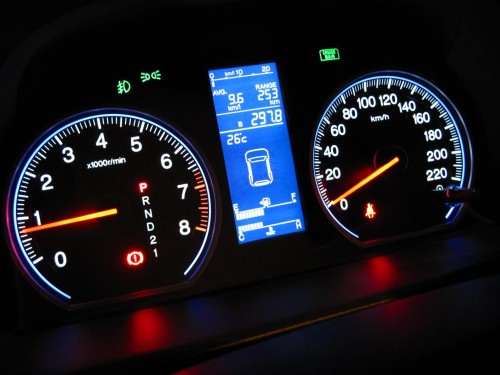
Now to the part I love the most. Let us start off with the CR-V. It comes with a 2.0 litre i-VTEC that makes 148 hp and 190 Nm of torque from 4,200 rpm. The numbers are anything but impressive, and unfortunately with 1,540 kg to haul it feels as if the CR-V can do with a more powerful engine.
Acceleration does feel heavy but once you’ve reached a set cruising speed, the power issues fades away, until you slam the accelerator to overtake the car in front of you, that is. The shifting of its five-speed automatic is decent enough and the electric power steering feels a little heavy at times, but it’s not really an issue to me.
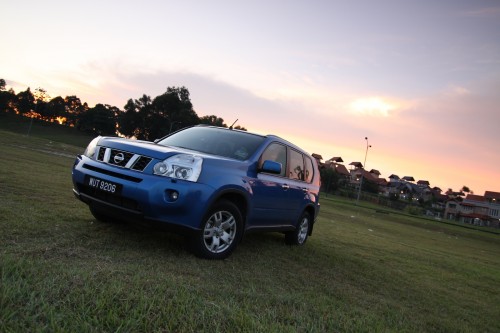
Its ride comfort is good, with no irritating bumpiness whatsoever. In terms of handling, I find the CR-V performance at an average level. The X-Trail’s MR20DE twin-cam engine has less power than the CR-V, at 137 hp, though torque is slightly higher, 198 Nm to be exact, from 4,400 rpm. It does pull away slightly better than the CR-V, and it uses Nissan’s Xtronic CVT transmission, with a six-speed manual mode.
To be honest. I am not a fan of the CVTs – I find the sound that the engine makes because of it being rather irritating. However, the Xtronic isn’t that bad and it works smoothly, or fluidly, to use another term. Acceleration is effortless; however, it does take a while for it to achieve higher speed. In terms of ride comfort, the X-Trail does well in absorbing bumps and irregularities. At the same time it is also firm enough for high speed travel. The Nissan boys have got it right with this one.
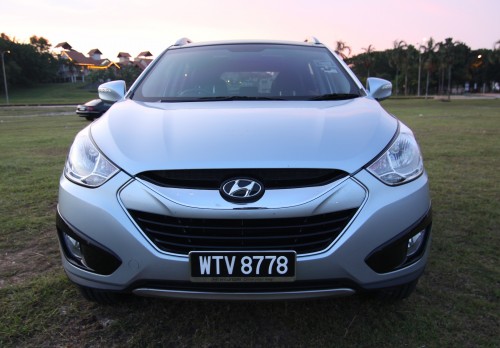
The Hyundai Tucson’s Theta II 2.0 litre engine is quite powerful on paper, with 164 hp and 197 Nm of torque at 4,600 rpm, and carries over the power into actual driving. It does however tend to sound a little rough when you rev it hard. The power unit is paired with a six-speed slush box, which does its job well enough, although it could use a little more refinement.
This applies to the drivability of the Tucson as well. It handles good enough for normal day-to-day driving and its un-refinement is easily hidden if you don’t push the car hard. Even so, you can actually toss the Tucson around corners, though it would definitely benefit from a more refined handling and a steering with a better feel. In terms of ride quality, this Korean seems to be a bit stiff, a little bumpier on the rough roads.

The Mitsubishi ASX is one car that seems to excel in the handling department. This is one SUV or crossover or what ever you fancy that handles like a car. Agile and nimble would be the right word to describe the ASX. It is no Megane RS, but among its rivals in this shootout, it is right at the top.
You can practically chuck it around bends and it won’t bite back, as long as you don’t go overboard. The chassis seems to communicate with you well through the steering wheel, which also offers a good feel. In terms of power, it is decent with its 2.0 litre DOHC MIVEC putting out 148 hp , identical to the CR-V, and 197 Nm of torque at 2,400 rpm.
Although quite similar in terms of power figures, you do feel more punch in the ASX. This also joins the X- Trail in offering a CVT unit with six-speed manual mode.
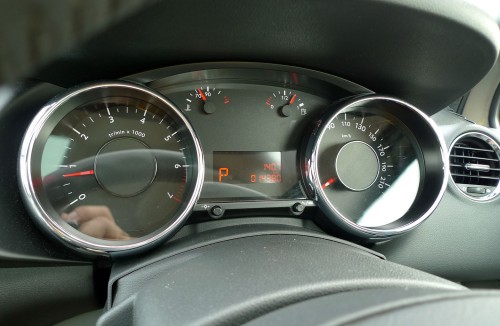
Finally we have the Peugeot 3008, which doesn’t really give us an apple to apple comparison in terms of engine type when put against the other four SUVs we have here. There are two major differences. First up is the fact that the engine is a 1.6 litre, instead of a 2.0 litre with the rest. Secondly, it is force-inducted. It is basically the same engine as the MINI, the rather famous 1.6 litre Prince unit.
It makes 156 hp and most importantly, 240 Nm of torque from as low as 1,400 rpm. The higher torque at lower revs proves to be very instrumental in zipping around traffic. Overall, you can safely say that 3008 is the most powerful of the lot, all thanks to the turbo, so no issues at all with acceleration and getting fast quickly. The Pug uses a good old six-speed transmission, which works without a fuss.
The ride comfort is pretty good, with high levels of comfort too. In terms of handling, you can take some pretty serious corners with it, but I still prefer the ASX. Something about the latter’s character makes the whole driving experience sportier. Overall, my pick would be the ASX in regards to overall performance from the SUVs we have here.
Anthony says

Ambling along the highway isn’t how one should define which of the lot to be the best, but the time spent plying the route did reveal a fair bit about each vehicle’s character; there was some hard driving done briefly on each later, which revealed yet more, but given that 99% of these SUVs owners aren’t likely to subject their rides to such, most of the basis – for me at least – was from that gleaned waltzing along.
The Tucson was my first ride out, and as before, when I drove it at point of launch, the 2.0 litre Theta II mill proved willing to get things moving. It feels perky from the get-go, buoyant in its character; conversely, it feels that bit less refined when pushed, and can be a bit zingy at the top end. As a cruiser the Tucson does well enough, though there is a fair amount of road noise, and the steering needs a bit of corrective input in terms of straight-line retention, but the light, easy feel of the rack makes it simple on the shoulders.
The plastics notwithstanding, the itemisation of the layout and switchgear operation in the Hyundai is pretty much fuss-free. One minus is the lack of reach adjustment for the steering, something that is also an oversight on the X-Trail and ASX. Seat comfort is decent, though not group-leading.

As a driver’s car, or crossover, if you prefer, the ASX is by far the leader of the assembled five-pack. The level of steering feel and communication is by far the highest of the lot, as is the vehicle’s response to dramatic changing load/direction. Agile, in a flamboyant manner, the main reason why you’d want one is because you love to drive, with everything else secondary.
Meanwhile, the 3008 drove well, and the turbocharged Prince 1.6 mill chugged along with the least amount of strain of all the engines throughout the drive. It felt like it was consuming the most fuel, based on the onboard readout, but this proved to be deceptive (see fuel consumption section below). In-cabin comfort is high, and the plushness of the interior, despite that pinched feeling, makes doing the miles all that bit easier.
Still, its size means that it is at a slight disadvantage compared to the rest of the crowd here, the ASX notwithstanding. I still don’t think it’s a SUV, which it was tagged when it was launched. A good compact-ish crossover for the young urban family, yes. Super utility people mover, er, no. Drives well though, so it gets brownie points here.

From an interior perspective, the Nissan simply overwhelms the rest. The rather-too-soft driver seat aside, everything about the X-Trail screams functionality. It isn’t the fastest, nor the most agile, nor does it have the sense of presence or grandeur. But there’s acres of space in that cavernous cabin, and something about it works, at least to me – I found myself liking it more with every passing mile.
Easy to drive, there’s nothing imposing in its character; it’s vanilla, really – you get in, turn the key and get to your intended destination without fuss, fanfare or any sort of emotion, for that matter. All that functionality, dished out in a completely neutral manner. It isn’t as bad as it sounds, actually.

Finally, we come to the CR-V. I spent the least amount of time in it during the test session, but driving it regularly keeps reminding me why so many view it as the de facto choice in this market when it comes to putting their money on the table for a mid-price, mid-size SUV.
Yes, the 2.0 litre block can feel slightly underpowered at the lower end pushing that mass (it felt the laziest of the lot in start-offs). The steering is also on the heavier side of things, and needs quite a bit of corrective input during highway driving.
But in every other sense, the Honda gets it right. From the tactility of the switchgear operation (which makes all the others, save the 3008, feel cheap) to the interior presentation levels, the CR-V feels good to the touch and sight. It is agile enough when asked, and balanced would best describe its overall level of driving engagement. In all, it feels well thought out, the type of product that you know a copious amount of time has been spent refining all the key points. In this regard, it’s an absolute toss-up between the neutral functionality of the X-Trail and the refined, cultured presentation of the CR-V.
FUEL CONSUMPTION
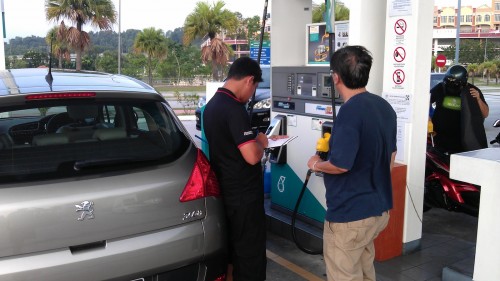
During the group test drive, we travelled 412 km from the Klang Valley to Ipoh, and back. It included stop and go traffic, town driving and, of course, highway cruising along the PLUS Expressway.
The route we selected allowed us to test the cars in various road conditions where we spent quite a bit of our time on the highway. During the test drive we also carried out a fuel test for all the SUVs involved, with measures employed to ensure accuracy such as adhering to the 110 km/h national speed limit, keeping a safe distance between the cars, ensuring that all cars are driven by all test drivers (to make sure all SUVs get a consistent driving pattern overall) and so on.
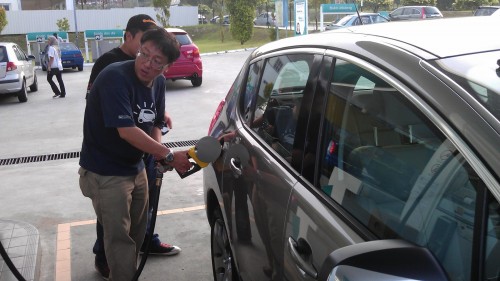
Here are the final results:
Peugeot 3008 (1.6 litre Turbo) – 7.37 litres / 100 kmThe 3008 took the top honours, with the ASX following closely behind. These were the only two which breached the 8.0 litre per 100 km mark following the test, and the 3008’s lower displacement (and turbocharger) 1.6 liter engine likely has contributed to its number one spot here.
Mitsubishi ASX (2.0 litre NA) – 7.5 litres / 100 km
Honda CR-V (2.0 litre NA) – 8.3 litres / 100 km
Nissan X-Trail (2.0 litre NA) – 8.6 litres / 100 km
Hyundai Tucson (2.0 litre NA) – 8.7 litres / 100 km
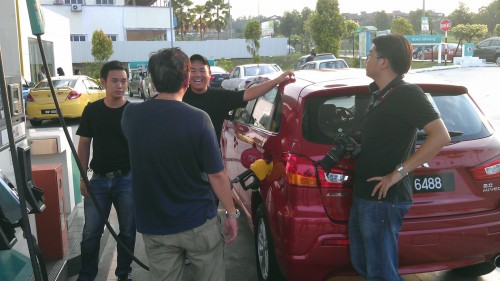
It’s also interesting to note that the ASX, which uses a normally-aspirated 2.0 litre engine, achieved 7.5 litres per 100 km, just 0.13 litres behind the 3008, which makes it the most fuel efficient vehicle among its 2.0 litre competitors and it is also very comparable to the Pug.
We reckon that the ASX achieved almost similar numbers due to its engine tune, its MIVEC (or Mitsubishi Innovative Valve timing Electronic Control system) calibration and of course its transmission tune. The engine also utilises a lightweight aluminium block which helps the ASX achieve positive such results. We must also take the vehicle kerb weight into account. It appears that the ASX is lighter than the 3008, with a kerb weight of 1,375 kg. Its French rival is 1,450 kg in comparison.
CONCLUSION

Danny says
Big or small, boxy or curvy, there’s an SUV for every one. No lemons here, just entries that excel in various areas. At the end of the day, it depends on what you want out of an SUV, whether as a great family wagon (Nissan fits the bill, Peugeot is out), a personal urban mobile (Peugeot and Mitsu are compact enough and drive well) or great value and bold design (Hyundai).
I love to drive, but I also view the SUV as a family car, which means that practicality and comfort are high in the list. The Honda CR-V is a good all-rounder, but I like the honest, self-confident X-Trail. The Nissan is comfortable in its own skin, and will make you feel as comfortable, too. As for those itchy moments, I’ll buy a cheap fun car.
Harvinder says
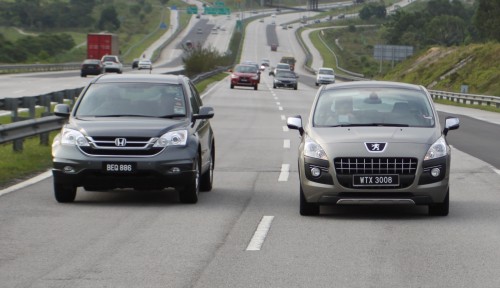
Overall, there’s no obvious winner here – all the SUVs here definitely pass the minimum requirement, so it’s a matter of personal choice. You should also look at other factors such as safety features and pricing. The 3008 comes with a 5-star Euro NCAP rating which is made up by 6-airbags, ESP and ISOFIX points, among others. It retails for RM146,888 (all prices here are OTR including insurance).
The Tucson on the other hand has two airbags and ESP and it retails at RM139,888 for the 2.0 litre High Spec. The ASX is also fitted with dual airbags and ESP (or ASC, as Mitsubishi calls it). Also in the list is Hill Start Assist. The ASX goes for RM139,980, which is similar to the Tucson. The CR-V comes with four airbags and ESP (or VSA) and it goes for RM149,980.
Finally, the X-Trail, which goes for RM149,500; it comes with, yes, you guessed it right, dual airbags but without ESP, which is interesting to note. It only has ABS with EBD and BA. That’s a bit of a downside, given a price tag that’s a shade off being the most expensive of the lot. To me, the fight would go down between the Mitsubishi ASX and the Peugeot 3008, if I were shopping for an SUV.
Anthony says
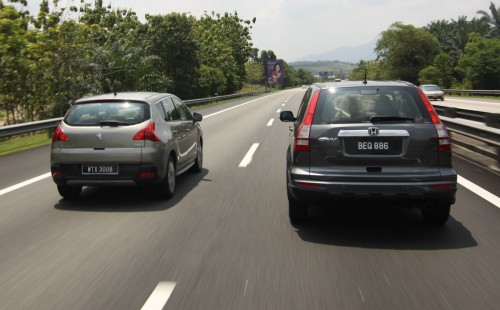
There wasn’t a runaway pick of the heap, not where I’m concerned; it’s nice to see how close things have gotten in the segment that there wasn’t one dominant player. The ASX is my weapon of choice from a driving perspective – the CVT aside, it is engaging, to say the least. But that’s never the only reason why one buys a vehicle in this segment. and its size means that those shopping for a full-fledged SUV may find this crossover too small for their needs.
The same goes for the 3008. Pluses are a highly refined interior and tractable, crowd-pleasing mill, but its lack of heft may preclude it as a straight choice to most. Its appeal lies with those who find the allure of a Continental offering winsome, and provides those seeking an alternative to the predominantly Japanese/Korean crowd a perfect option. A small family (quite literally, for rear occupants!) is also a prerequisite.

The Tucson shows how much the Koreans have closed the gap, but still, haven’t quite gotten the cigar – there are key areas in which its lack of absolute refinement shows it up (it’d have been very interesting pitting the plusher Sportage cousin into the mix against the Japanese competition). Still, the external shape is light years ahead of the previous one, and its main point is that it now offers a serious contender as an alternative if you don’t want to go with a Jap offering, and think a Pug is too much work.
In the end, from the assembled crew, I’d take my pick from the X-Trail and CR-V. I didn’t expect the X-Trail to figure as highly as it did – looks truly can be deceiving. I liked its honesty; it doesn’t paint anything more into the picture than it should, and it goes about everything in such clean, unfettered fashion there is much to like about it and its character.
As for the CR-V, well, its strength is in its overall presentation and coherency – here, it never led in any particular aspect, but scored high and kept pace with its overall level of refinement and, most importantly, its consistency in delivery across the board. A large number of buyers have likely found that very essence – and composition – appealing, given the numbers shifted through the years. With this household being one of these, I’m not inclined to disagree with the collective, that plying the safe, consistent route is not such a bad thing. The tick goes in this box for me then in this particular five-way.


No comments:
Post a Comment